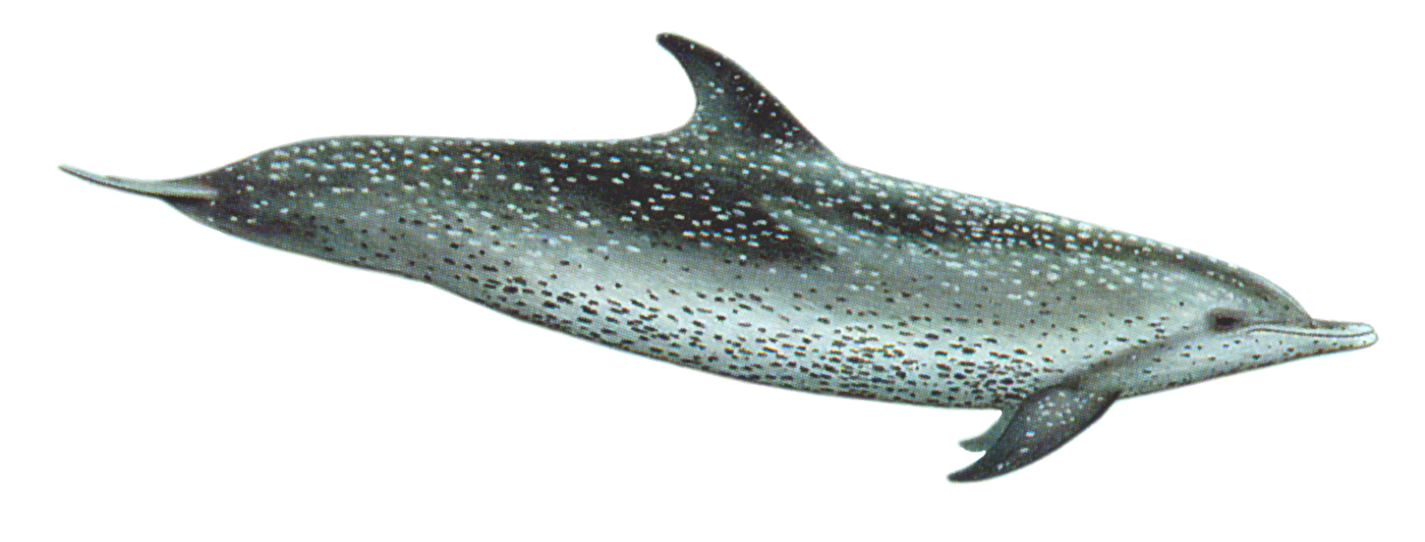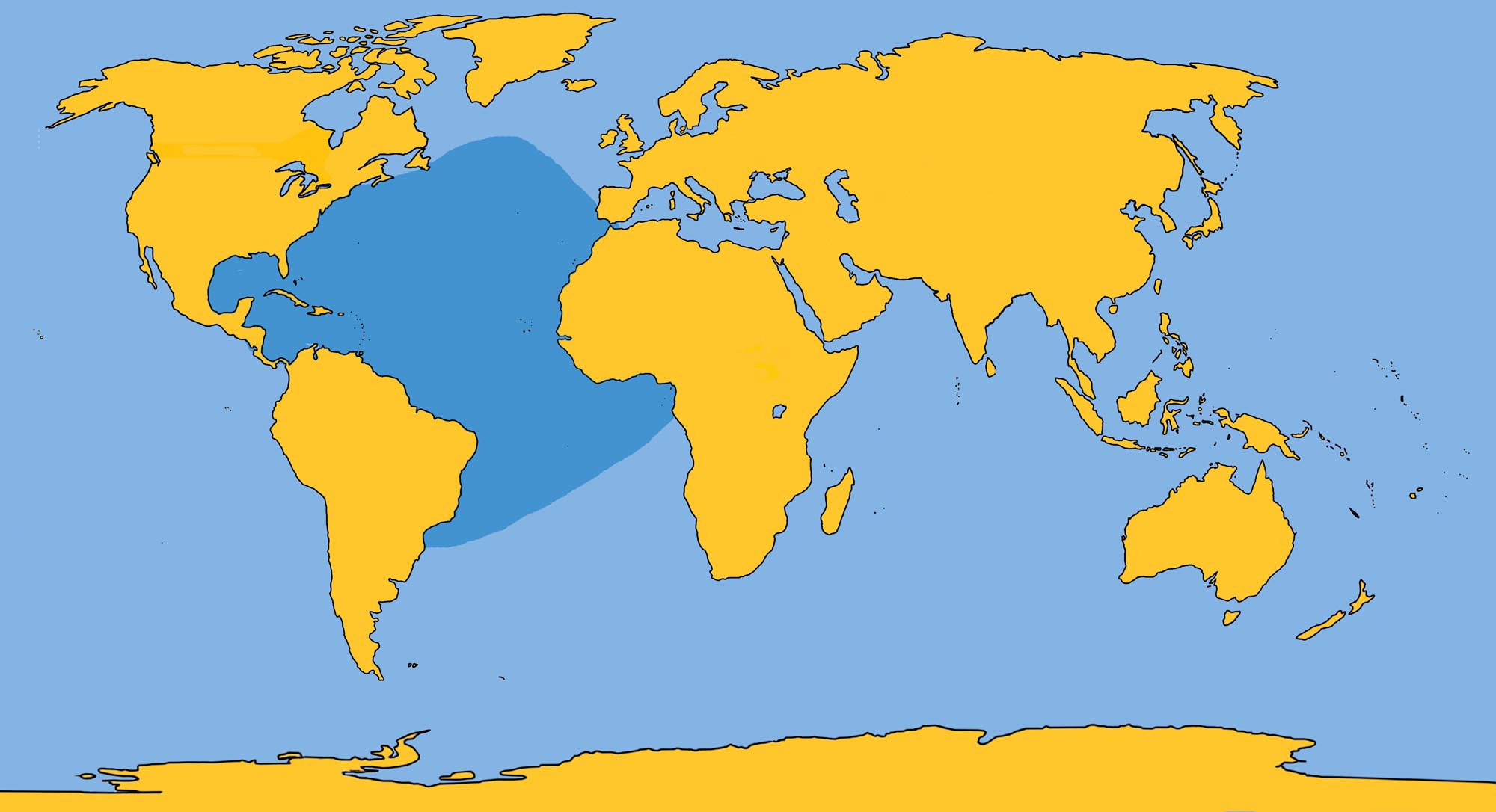Family: Delphinidae
Genus: Stenella
Species: S. plagiodon (Cope, 1866)
Taxonomic Note: Currently all Atlantic spotted dolphins are considered to be Stenella plagiodon. However, William F. Perrin, a U.S. government biologist, is revising the philosophy, suggesting a need to recognize three distinct species: Stenella dubia, Stenella attenuata, and Stenella frontalis (into which Stenella plagiodon will be absorbed).
A variety of morphological differences, some slight and some dramatic, separate the different populations of Stenella. All Stenella are found in temperate and tropical waters throughout the world. The Atlantic spotted dolphin is distinguished from spinner and other spotted dolphins by its robust body, thick beak, and other characteristics more representative of bottlenose dolphins. They are, however, the most spotted of all dolphins at maturity.
Atlantic spotted dolphins are extremely friendly and inquisitive animals, traveling long distances to ride the bow wave of passing vessels, and will swim within touching range of divers and swimmers.
Physical Description: Closely resembles the bottlenose dolphin; the beak of the species is nearly identical both in shape and extension. The body is stocky with a disproportionately narrow peduncle region.
Color: Generally blue overall. The dorsal region is much darker than the ventral, extending down from mid-flanks to encompass the peduncle. The dark dorsal area is spotted extensively with lighter blue spots. The young are born a lighter color (resembling the bottlenose dolphin) and develop the spotted coloration as t hey mature.
Fins and Flukes: A falcate dorsal fin, very tall, is well developed and located on the mid-back region. The flippers are curved on their leading margins and pointed at the tips. The flukes are well spread, pointed at the tips with a definite median notch.
Length and Weight: They reach a length of 7.5 ft (2.3 m) with an estimated weight of 280 lb (127 kg).
Teeth: There are 34 to 37 small, conical teeth in each side of the upper and lower jaws.
Feeding: They feed on squid, probably also herring, anchovies, other small fish, and eels.
Breathing and Diving: These animals rise to the surface to breathe, then can dive and stay submerged for several minutes at a time; longer if riding the bow wave of passing ships.
Mating and Breeding: Calves, approximately 3 ft (91 cm) in length are believed to be born in June after a gestation period of approximately 11 months.
Herding: Commonly 50 or fewer, but the herds may reach several hundred.
Distribution: Atlantic coast of the United States, Gulf of Mexico, Bahamas; they also may inhabit the coast of South America and Europe. They are less abundant than other species of spotted dolphins.
Migration: The Gulf of Mexico population moves inshore during late spring, approaching close to shore during summer.
ATLANTIC SPOTTED DOLPHIN DISTRIBUTION









